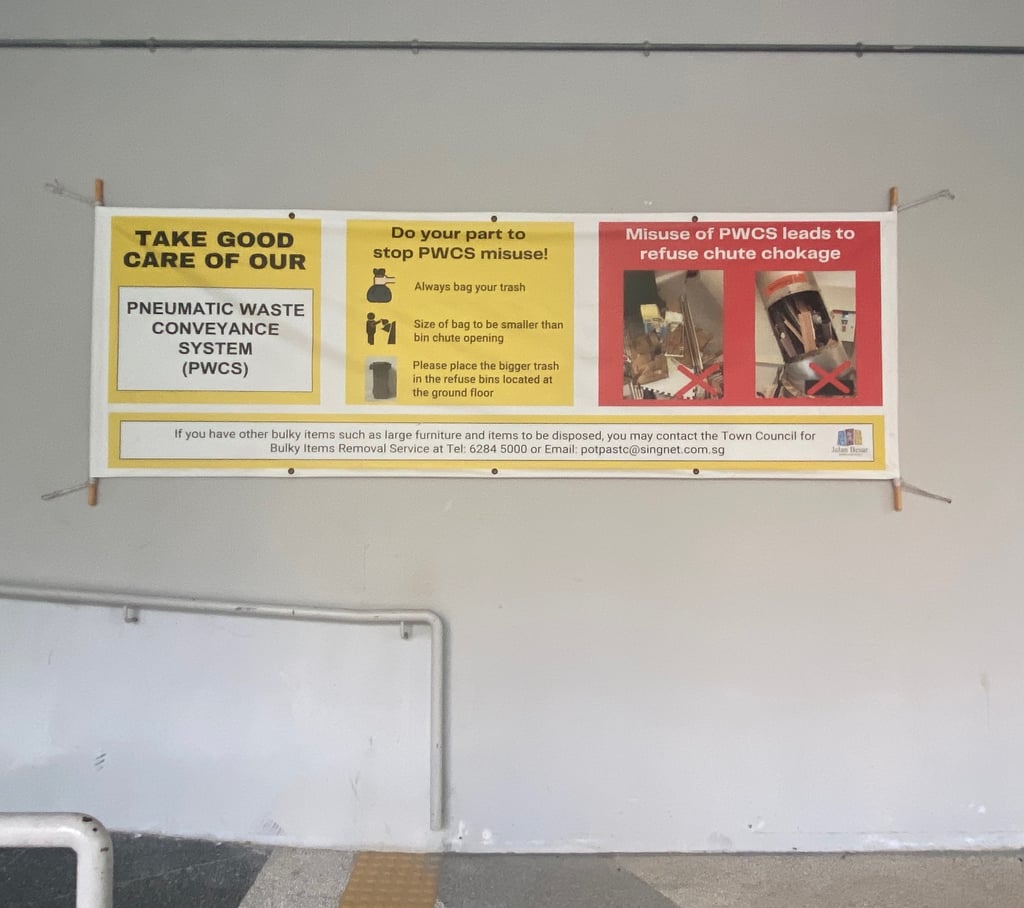Solid Waste Disposal in Singapore: Is Incineration The Solution?
10/28/20233 min read


In Singapore, solid waste is separated and collected at source (Hoa and Khanh 2021), and non-recyclables – comprising over 40% of solid waste (Eco-Business 2021) – are incinerated at waste-to-energy (“WTE”) plants (NEA1). Finally, ash residue and other non-incinerable waste is loaded onto barges and tugged offshore to be buried at Singapore's only landfill on Pulau Semakau (NEA1). Plastic, horticultural, and wood waste from industry and commerce are sent to biomass and composting plants (CNA 2022).
A notable technological development in waste disposal in public housing, which is home for 80% of Singapore’s residents (HDB1), is the shift away from manual transference from vertical chutes toward a pneumatic waste conveyance system using vacuums and subterranean pipes (HDB2).
The WTE process could be an alternative source of renewable energy. The heat created in the incineration process transforms into superheated steam in boilers, which in turn powers turbogenerators to produce electricity (NEA2). However, energy from this source currently supports only 3% of Singapore’s energy requirements (Hoa and Khanh 2021; Chemical Processing 2019), and its long-term scalability is at present uncertain.
While the design of the WTE plants purifies the flue gas prior to re-release into the atmosphere (NEA3), there does not appear to be conclusive evidence as to the environmental repercussions of the released gas on human health and plant and animal ecosystems, particularly given the unavoidable greenhouse gas emissions and air pollution associated with incineration in general (Eco-Business 2021; Straits Times 2019). Approximately 10% of the toxic pollutants associated with incineration – including heavy metals, dioxins, furans, sulfur oxides, and nitrogen oxides – appear to persist in the flue gas even after purification (Tan and Khoo 2006).
Singapore’s joint approach of recycling and incineration for the most part is viable, sustainable, and efficient in principle, especially given the pressures of its small land area and high population density.
However, to ensure greater effectiveness and mitigate adverse environmental impacts, the following could be useful – (1) enhanced cooperation from Singapore residents and organizations in terms of reducing waste generation and improved cleaning and sorting of recyclable materials at source (CNA2022); (2) developing technologies to curtail emissions and pollution from the WTE plants and barges; (3) exploring alternative possibilities to incineration such as composting (UNEP 2023); (4) promoting or mandating the use and production of recyclable packaging and products; and (5) reducing consumption in general.
References:
Channel News Asia (“CNA”). (2022). ‘18% increase in waste generated in SG last year as economic activity picked up’. 18 April 2022. https://www.channelnewsasia.com/singapore/waste-generated-2021-recycling-nea-blue-bin-2631336
Chemical Processing (2019). ‘Singapore Gets Closer To Zero Waste Goal’. 21 June 2019. https://www.chemicalprocessing.com/environmental-protection/environmental-protection-ground/article/11306200/singapore-gets-closer-to-zero-waste-goal
Eco-Business. (2021). ‘Five facts about unsustainable waste management in Singapore’. 11 January 2021. https://www.eco-business.com/opinion/five-facts-about-unsustainable-waste-management-in-singapore/
Hoa, D.P. and Khanh, N.H. (2021). ‘Applying the Circular Economy Model to Urban Waste Management in Singapore and Experiences for Vietnam’. Advances in Economics, Business and Management Research, volume 196. Proceedings of the International Conference on Emerging Challenges: Business Transformation and Circular Economy (ICECH 2021).
Housing and Development Board of Singapore (“HDB”)1. ‘Public Housing – A Singapore Icon’. https://www.hdb.gov.sg/about-us/our-role/public-housing-a-singapore-icon#:~:text=The%20flats%20spell%20home%20for,about%2090%25%20own%20their%20home.
HDB2. ‘Waste Management -Pneumatic Waste Conveyance System (PWCS)’. (n.d.) https://www.hdb.gov.sg/about-us/our-role/smart-and-sustainable-living/hdb-greenprint/waste-management
National Environment Agency of Singapore (“NEA”)1. ‘Semakau Landfill’ (n.d.). https://www.nea.gov.sg/our-services/waste-management/waste-management-infrastructure/semakau-landfill
NEA2. ‘Solid Waste Management Infrastructure’ (n.d.). https://www.nea.gov.sg/our-services/waste-management/waste-management-infrastructure/solid-waste-management-infrastructure
NEA3. ‘Waste-To-Energy Incineration Plants’ (n.d.). https://www.nea.gov.sg/our-services/waste-management/waste-management-infrastructure/semakau-landfill/waste-to-energy-and-incineration-plants
Straits Times. (2019). ‘Parliament: Emissions from air-conditioning contribute 'sizeable' amount to buildings and household emissions’. 4 November 2019. https://www.straitstimes.com/politics/parliament-emissions-from-air-conditioning-contribute-sizeable-amount-to-buildings-and
Tan, R.B.H. and Khoo, H.H. (2006). ‘Impact Assessment of Waste Management Options in Singapore’, Journal of the Air & Waste Management Association, 56:3, 244-254, DOI: 10.1080/10473289.2006.10464463
UNEP. (2023). ‘Composting: Solution to Food Loss and Waste’. 25 September 2023. https://www.unep.org/ietc/news/story/composting-solution-food-loss-and-waste#:~:text=1.,vermin%20infestations%20at%20disposal%20sites
Pneumatic waste conveyance system in government housing, Potong Pasir, Singapore (Image: Aveline CHAN)